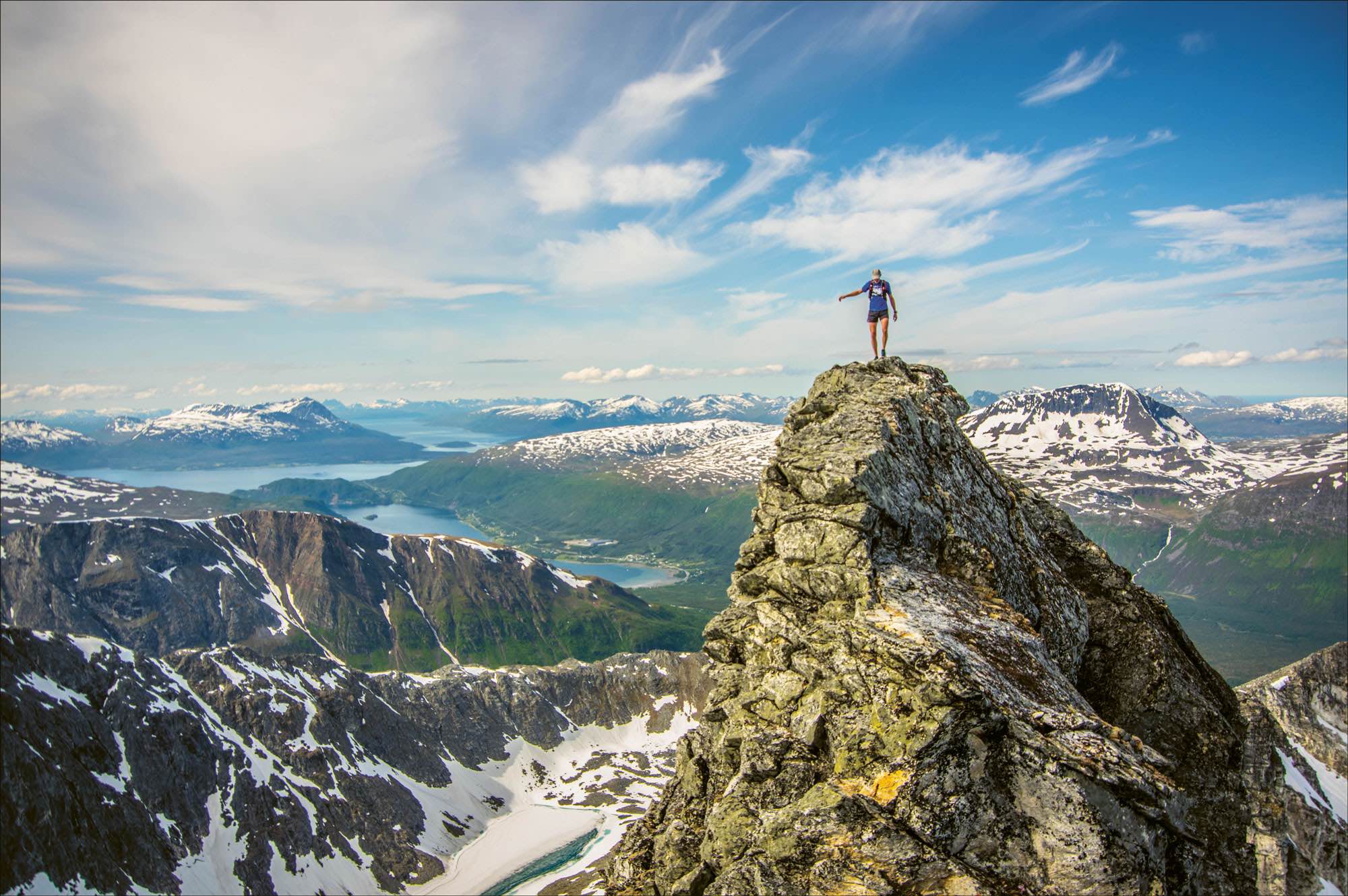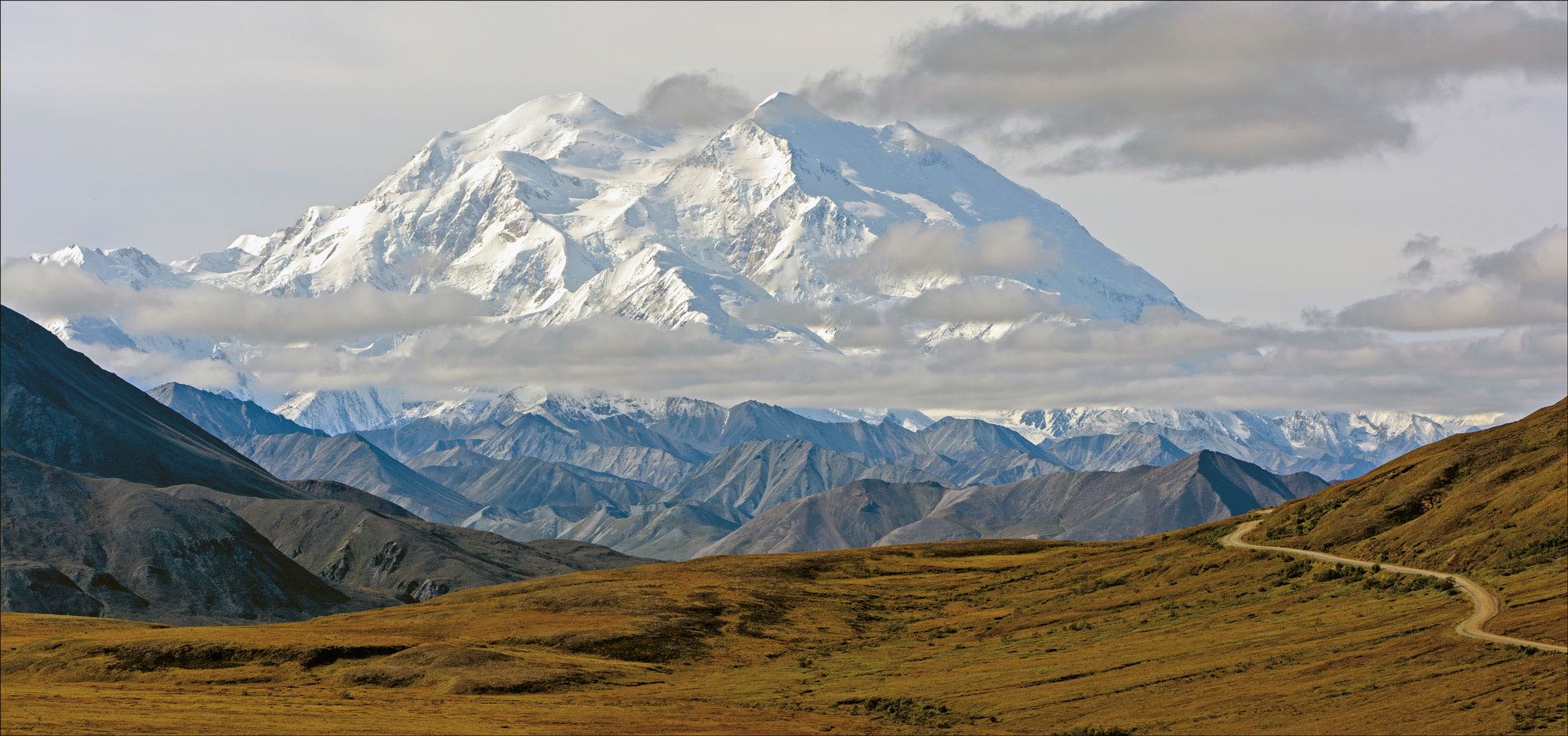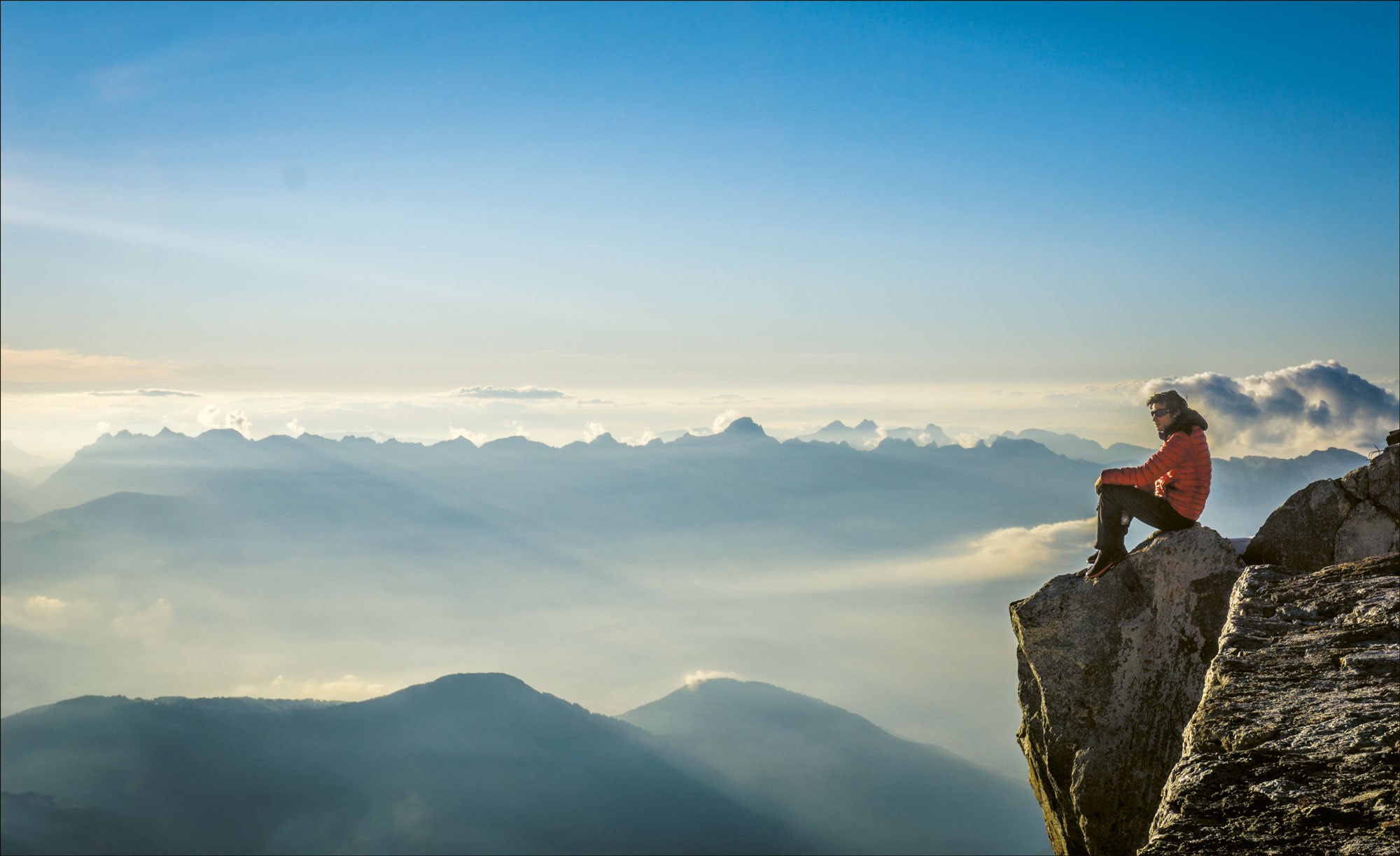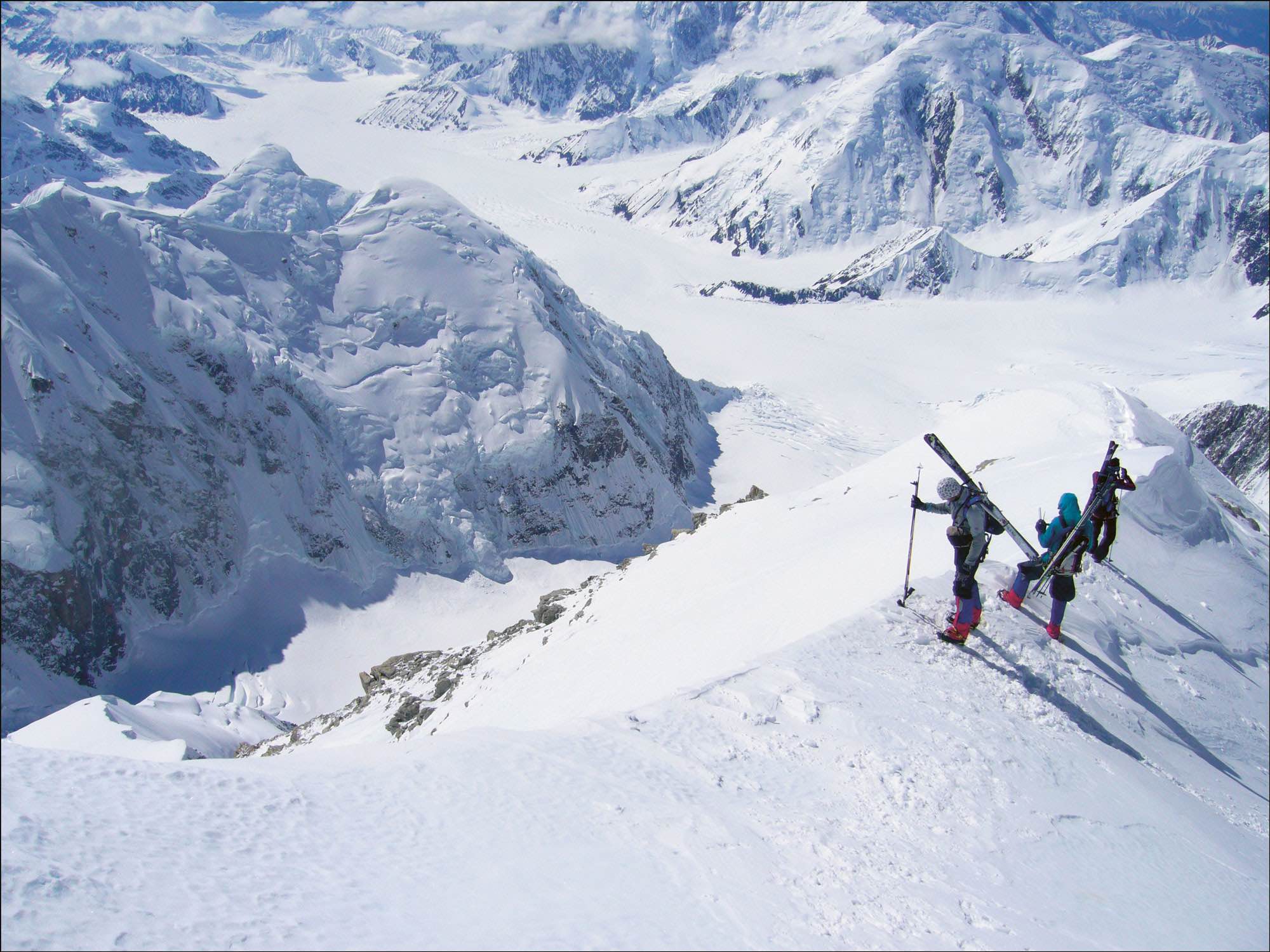[Editor’s Note: The book Summits of My Life by Kilian Jornet tells the extended story of Jornet’s multi-summit, multi-year, multi-sport project of the same name, from its dream stage to developing a project ethos, and from each mountain’s experience to documenting lessons and skills learned. This excerpt is republished from Summits of My Life by Kilian Jornet with permission of VeloPress.]
It all started with a photo of the Matterhorn that hung in a frame on the wall of my childhood bedroom. That photo was the first thing I saw when I got up each morning and the last thing I saw before going to bed each night. I began to fall in love with the majestic silhouette of the mountain, desiring it and fearing it all at the same time. In my dreams, I imagined how one day I would climb it.
I was most tempted—and, at the same time, afraid—to break the Matterhorn record, set by Bruno Brunod. My palms began to sweat just thinking about it, and my heart began to pound whenever I imagined attempting it one day. This was the starting point for the Summits of My Life project.
It was at the end of the very busy 2011 trail running season. I felt I was missing out on opportunities to really discover myself, to do new things that would allow me to open myself up to experiences in a new way. One day as I came back from the mountain alone, I recalled the dreams of my past. The image that came to me was that old photo of the Matterhorn, and with that image came the rest of the mountains that I had read and heard so many stories about when I was young.
I chose seven summits or challenges I felt a special attraction to, either for the athletic challenge they would bring; for the history or the beauty of the mountain; for the problems I anticipated running into; or for the experience that, at the end of the day, would help me learn. These were the Mont Blanc traverse, Mont Blanc summit, the Matterhorn, Mount Elbrus, Denali, Aconcagua, and Mount Everest. I knew that on the mountain records draw the attention, and that these were always subject to the day’s conditions and the means used to set them. But I also knew that when all was said and done, all I would be left with were the memories and the knowledge of “how we did it.” With this in mind, I decided to write up a Values Statement where I established the guiding principles of the project that would keep us focused more on the “how” and less on the “what.”
These are the principles that have guided the Summits of My Life project:
1. Nobody told us who to be. Nobody told us to embark on this journey. Nobody told us it would be easy. Someone said that we are what we dream. If we don’t dream, we die.
We will fight for our dreams and we will follow our passions, because we believe that the meaning of life lies not in following others’ footsteps, but in finding our own path to what we love. And, despite any difficulties, we learn from each misstep and press on.
2. We will follow the instinct that takes us toward the unknown.
Taking risks is not like making a bet; it’s evolving and it’s changing each one of us. Being free is being ourselves, making our own decisions, not following anyone. It’s choosing: choosing to have a family, choosing a job, choosing a peak. On the mountain, we are the ones who trace our own path, the ones who decide whether we take this path or that one, whether we climb this peak or that one. Sometimes we do it and sometimes we don’t, but it’s up to us to make our own path where there is none.
3. We won’t look at the obstacles we’ve overcome, but the ones ahead.
We should learn from our past without living in it; we should use the experience, respect, and fear that we’ve lived in order to build a solid future. The past isn’t the life that we should let define us. We will live each instant from the present, always looking at what lies ahead of us.
4. It’s not about being the fastest, strongest, or biggest. It’s about being ourselves.
Human beings have shown that, with technology, we are capable of doing just about anything. But does that really matter? We need to learn to live with less, with only what we need to be fully human, the most integrated with the environment, with nature. Our power is in our feet, our legs, our bodies, and our minds.
5. We aren’t just runners, alpinists, or skiers. We aren’t just athletes. We are people.
Shared emotions don’t add up; they multiply. A summit isn’t a geographic point, a date, and a time. Each summit is a warehouse of memories and emotions. It’s the people who accompanied us and those who waited for us at the bottom. We are all the people that we love and admire, those who go with us without ever being there.
6. We aren’t sure we’ll do it, but we are sure that we’ll find happiness.
Failure is not trying. Failure is not enjoying every step. Failure is not feeling. There will be thorns in the path, there’ll be pain, and there’ll be objectives that lie far off in the distance, but none of that is failure—not if we let the journey be what fills us up, even if we don’t make it to the top.
7. Simplicity is key.
We’re going to the mountain without aid, without assistance, without external help. We’re going humbly, without seeking to best the mountain because we know it will always be stronger, and we will go as far as it lets us. We’ll learn to live with the mountain, the very rocks themselves, the plants, and the ice—whatever lies underneath the surface, whatever was there before us and will continue on there after us.
8. We’ll go in silence.
We will make sure our journey goes unnoticed, that each trek leaves nothing more than our footprints that the wind will eventually erase. We carry our authentic selves within us, and it’s only in silence that we can begin to explore ourselves.
9. We’ll go with integrity.
There’s no helping hand to intervene when we’re in danger on the mountain, and there’s nobody to congratulate us each time we achieve what we set out to do. We can’t abandon the path because there is no path. Because hypocrisy doesn’t exist on the mountain. Because the mountain is simply the mountain. For better or for worse, we are all responsible for our own actions.
10. We’re always searching for something—is it life?
What is the meaning of any venture, of any journey, of life? Is it to achieve goals or make progress toward them? Is it to reach the horizon or discover the landscape we cross as we walk toward it? Is life the medal at the end of a race or the emotions and feelings that we keep inside as we go? We are forged in dreams and emotions.
With these guiding principles and our ways of seeing and experiencing the mountain—and a list of the summits we wanted to reach—we put together a small team of people to give shape to the Summits of My Life project, and we put it into action.
Imagining New Dreams
It has been five years of learning that have allowed me to discover some of the most spectacular places on Earth and my own insignificance as I stand before them. Setting increasingly difficult goals for myself has forced me to learn new techniques, to spend more time on the mountain, and to gain more knowledge and experiences. On top of that, I’ve been able to do it all surrounded by friends who have helped me to truly be able to take in all of the past five years.
These five years have been full of records, losses, reunions, experiences, and new perspectives. It’s when your wildest dreams come true that new doors open to even wilder ones that you couldn’t have possibly imagined before.
Call for Comments (from Meghan)
- What do you hear in Kilian Jornet’s words that ring true in your own adventure ethos?
- What is the relationship you develop with the places through which you move? Can you put words to it?





